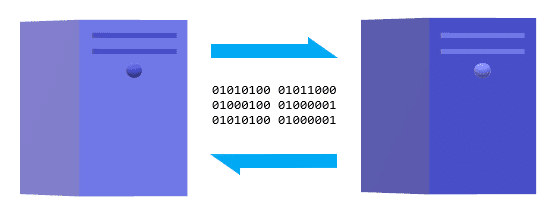Reaching Xero’s limits? It’s not the end of the world.
Are you reaching Xero’s limits?
 Xero is a popular small business cloud accounting solution. This idea is further reinforced by the 200 employee limit as well as other lesser known “soft” limits on invoices, expenses and transactions. You may wonder whether or not is is a viable option for when your small business grows. With some creativity, you can avoid moving to a more expensive, enterprise resource planning system.
Xero is a popular small business cloud accounting solution. This idea is further reinforced by the 200 employee limit as well as other lesser known “soft” limits on invoices, expenses and transactions. You may wonder whether or not is is a viable option for when your small business grows. With some creativity, you can avoid moving to a more expensive, enterprise resource planning system.
Accounting systems like Xero are not affected as much by the amounts recorded in transactions compared to the sheer number of them. Small businesses tend to make a plethora of small, low value transactions which can quickly add up to hundreds or even thousands of entries on Xero. The issue for Xero is that the more entries you use, the more it costs them in terms of processing power.
As a result, many small business accounting systems place limits on the number of transactions that can be used in a given period (e.g a month).
However, Xero does not actually have any hard limits on the amount of sales or purchase invoices that you process nor does it have any limits on the number of bank transactions that you record. Note that there are limitations to Xero though, and if you push through too many records, it will slow down and will eventually resemble the drawer on the left, where completing even the smallest changes will take significant periods of time. In the worst cases, the software simply stops working and freezes.
Now, do you need to plan your migration out of Xero then? Do you need to avoid it completely? Well, despite what was just said, the answer is probably no. With some clever thinking, some rearranging might be all you need to stick with the popular cloud accounting option.
The following 4 tips represent some solutions for common issues that businesses experience as they grow with Xero. They might not apply to you, though, so you may need to consider hiring a consultancy to assist you.
Tip #1: Putting transactions in batches
 Usually, if you’re taking advantage of a POS system or inventory management software, your vendor will likely support transaction batching. Ask your vendor, you never know if they might have it.
Usually, if you’re taking advantage of a POS system or inventory management software, your vendor will likely support transaction batching. Ask your vendor, you never know if they might have it.
For example, if you run a small business that processes large invoices that contain many invoice items, you may encounter the limits of Xero. It will likely slow down to the point of timing out!
Issues can become so severe that you may even struggle to generate financial statements from Xero.
Fortunately, transaction batching can be used to limit this. Instead of processing the individual invoice items, we can take the final invoice amount and use that. This can cut the number of “invoices” listed on Xero from tens of thousands to mere hundreds.
Tip #2: Consolidate
 Many businesses run a variety of different systems to manage inventory, their online stores, etc.
Many businesses run a variety of different systems to manage inventory, their online stores, etc.
As sales begin to pick up, naturally Xero begins to get bogged down by the number of transactions you make. Just like the previous tip — you guessed it — you’ll eventually reach the point where Xero will fail to generate business activity statements and other important documents.
Certainly, to keep efficiency, you wouldn’t consolidate transactions by hand as that wouldn’t be beneficial to your business. In this case, it may be worth speaking with a developer to create a bespoke integration so that your business can keep using Xero efficiently.
Once you begin consolidating transactions, not only can you keep everything automated, the system will likely speed up significantly if the reason for the slowdown was due to a excessive number of records.
Tip #3: Use a billing engine
 When businesses first use Xero, many times they choose to use it as a billing solution as well. However, this can cause problems as more and more transactions are processed.
When businesses first use Xero, many times they choose to use it as a billing solution as well. However, this can cause problems as more and more transactions are processed.
Instead of bogging down Xero with billing, you might consider using a billing engine such as Chargify or Chargebee. Taking the heavy lifting of billing from Xero can significantly increase the speed that it works at.
In fact, you’ll get benefits such as prorated billing, automatic cancellation handling and service provisioning with Chargify that Xero doesn’t normally provide. This means that Xero can do what it does best — bank reconciliations, the plethora of accounting statements, etc.
Not only does it provide plenty of additional benefits, many billing engines tend to have integrations with Xero. Many of these billing engines submit hordes of transactions though, so you may need to consider the first and second tips while using a billing engine with Xero.
Tip #4: Build your own integration
The default integration between your trading and accounting system may suffice for now, but may need to be replaced later on.
Most popular systems come with well documented APIs (interfaces usable to connect software that perform tasks automatically). As a result, it is generally possible to create a system that pulls data from your trading system automatically, puts it all into a single batch and posts it to your accounting system.
This would require you to turn off the default integration to some degree (in some cases, completely.)
There’s a huge benefit to having a customized integration. It can be modified to suit your business’s continued growth and leaves you much more control over your systems, which allows for better software solutions that work for your business.
Is Xero still slow?
If you can’t build your own integration for Xero, or you’ve followed all the tips and Xero is still slow, it may be time to hire a developer that can create a bespoke solution for you. It’ll save you time and resources to have professionals examine your system and assist you with its issues.
